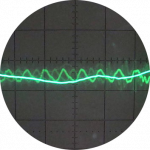Moving from two zone to single (open) / how to select a circulation pump - advice please
From reading around, my understand is you want one that is sized correctly and not oversized. I was looking for a bit of guidance on how to select - for example, why/when use one with a 15mm rather than 25mm inlet size; is a 50/60 one with a 5m head or 6m; that sort of thing. If replacing existing pumps with just one, it should be the right tool; how does one get a degree of confidence it is?
One that will do the job, they are tools, if you use the wrong tool, it will not work. They all the same these days.
How does one calculate a reasonable ballpark / baseline? I'm aware pumps have a way of adjusting the head and pressure types. Does one install adjustable flow regulators? What good techniques exist to ensure this can be honed once commissioned?
Almost impossible. Correct flow rate can only be determined on commissioning, anybody who says otherwise has never commissioned a system correctly. Experience will give a guide, but will not be accurate.
Even if a system is designed to the fitting and meter of pipe, friction loss figures for pipes and fittings are estimates and averages, they vary from component to component, manufacturer to manufacturer. No calculation can be accurate if your inpuuts are estimates and averages.So are there any rules / guidelines? and/or what is the best method - estimates/averages + 5%? 10%? 20%?
Paraphrasing, does this mean if the only pumps that could provide flow to the design are too costly/noisy, or there are physical limits to pumps that longer/narrower runs require more than one?...I always try to use 1 pump, but more may be needed if 1 is not big enough.Is it usual to replace existing pumps with one pump for everything (15mm UFH and 22mm rads pipe runs c.750m in total length) and leave the 3port in, or can/is it better to remove 3port but have one pump for DHW cylinder and one for heating - as generally only one is in operation at once.
Is this an example of where the runs were long/narrow?I have a system where I have had 4 pumps installed one after the other to achieve the desired flow rate
In what scenarios may you use 2ports rather than a 3port please? From reading around this since I posted originally, the general consensus is for S-plan design?
I've seen other posts of yours warning of these - what are you go-to full-bore 3ports (and 2ports, for that matter), please - are they still per this post (i.e. Belimo, Esbe or Sintesi)?
Thanks. And in terms of the practicality of one pump providing flow to either zone circuit, or both at the same time?
Zoning is a last resort, but only if it is designed correctly. If the heating system is not specifically designed to do it, DO NOT do it. It will significantly increase your running costs even if you are attempting to heat a smaller area.
@rhh2348 Let me try to explain.
We move heat with water, water will only hold a certain amount of heat (4,200 Joules per kilogram per degree Celsius (J/kg°C)) to move heat, you need to have a low flow rate with a high Delta T as with a fossil fuel boiler,(difference in flow temperature between flow and return) or a high flow rate with a with a low delta T as with a heat pump. For optimal performance, a heat pump must move 4 times the amount of water as a gas boiler. Therefore the standard 15-50 pump, common on most heating systems is not suitable for a heat pump. In most cases, you will need a 25-10 or similar to do the job. On a small 5-7 Kw heat pump, a 25-8 should be sufficient, above that you may need 2. However, this can only be done by commissioning where the flow rate must be accurately determined. Most good heat pumps today will have a built-in flow meter. the mechanical brass in-line flow meters are not accurate enough to determine the flow rate accurately.
The problem comes when the plant modulates, the delta T should not change, therefor at part load, the flow rate must be much lower than at full load. The good units will control this accurately, but there are very few that can, the most popular units tend to be the worst at controlling the flow rate.
If your heat pump accurately controls the flow rate and delta T, you want to commission the unit at a delta T of between 3 and 5. If your unit does not control the delta T, or you are not certain it does, you should commission the system to a delta T of 9 or 10. This will give adequate performance at part load and prevent the overcirculation which is a performance killer.
To commission under floor, set the flow rate and balance all zomes to the same flow rate by opening them all up full and closing the high ones down to balance., this will fairly evenly distribute the heat throughout the property, and open all lock shields and TRV valves when doing this. Fine-tuning can be done by increasing or decreasing flow to warm up or cool down rooms. When operating continuously on weather or load compensation, fine balancing is not required, as long as rooms are thereabouts, heat will move and balance out.
If you have any form of system separation (buffer or low-loss header) this is impossible to do and there is little chance of success.
I never use 2 port valves as a heat pump WILL NOT perform well on an S or Y plan piping arrangement. W plan (3 port diverter, hot water priority) is the only suitable method for piping a heat pump.
I hope this helps.
Thanks @heacol Brendon - helps as well as creating more questions! :-/ I appreciate your time and effort in responding.
As I'm sure you know, with the 6kW Ecodans, Mitsubishi state optimal heating operation is with a deltaT of eight/8, and a flow rate range between 8.6 and 17.2L/min but 10.8L/min 'recommended' (which gives the 8K deltaT)....to move heat, you need ... a high flow rate with a low delta T as with a heat pump.
Could I ask why a 15-50 isn't suitable per se - is it the 15mm wouldn't give suitable flow (for primary pipes of 22mm or 28mm), will the 5m never get the water round even a modest set of emitters, something else?For optimal performance, a heat pump must move 4 times the amount of water as a gas boiler. Therefore the standard 15-50 pump, common on most heating systems is not suitable for a heat pump. In most cases, you will need a 25-10 or similar to do the job. On a small 5-7 Kw heat pump, a 25-8 should be sufficient, above that you may need 2.
Also noting your comment about <= 7kW heat pumps and 8m head - why would the output of the heat pump dictate pump head?
Could you elaborate on how to accurately determine, please*?However, this can only be done by commissioning where the flow rate must be accurately determined.
By 'built-in' I assume you include in that a plug-in component able to talk to the controller, like the Sika VVX20 that Mitsubishi use? Do you consider it suitable? I've read it's less accurate when glycol is used. What other flow meters might you suggest?Most good heat pumps today will have a built-in flow meter. the mechanical brass in-line flow meters are not accurate enough to determine the flow rate accurately.
As the Ecodans don't control the pump speed based on load, is there any mechanism / device that could control the pump (I assume via PWM) if it could read certain values - e.g. compressor frequency, output power?The problem comes when the plant modulates, the delta T should not change, therefor at part load, the flow rate must be much lower than at full load. The good units will control this accurately, but there are very few that can, the most popular units tend to be the worst at controlling the flow rate.
As the Ecodan is designed to control the deltaT depending on what the flow meter reports, can I assume the system should be commissioned at the recommended 8?If your heat pump accurately controls the flow rate and delta T, you want to commission the unit at a delta T of between 3 and 5. If your unit does not control the delta T, or you are not certain it does, you should commission the system to a delta T of 9 or 10. This will give adequate performance at part load and prevent the overcirculation which is a performance killer.
I initially calculated and set per-loop flow rates based on pipe runs then have tweaked to make rooms/areas of the rooms' floor feel comfortable.To commission under floor, set the flow rate and balance all zomes to the same flow rate by opening them all up full and closing the high ones down to balance., this will fairly evenly distribute the heat throughout the property, and open all lock shields and TRV valves when doing this. Fine-tuning can be done by increasing or decreasing flow to warm up or cool down rooms. When operating continuously on weather or load compensation, fine balancing is not required, as long as rooms are thereabouts, heat will move and balance out.
*I think I can assume each individual emitter flow rate can remain the same as long as the flow temp adjusts to OAT changes - are each of the methods you and I mention examples of what you refer to with flow rate being 'accurately' determined?
Can I also assume that the 'sum' of emitter type flow rates (e.g. all rads, all UFH loops) is always the same or less than the rate associated with the LWT/RWTs ('system'), and that individual emitter types' flow rate is restricted to that which all of the emitters of that type need (e.g. for UFH, by manifold valves - 10 UFH loops at 0.5L/min could need 5L/min), whilst the overall system flow rate remains as dictated by delta 8/9-10/3-5 (e.g. 11L/min)? (Hopefully that makes sense).
OK, however isn't a W-plan the same as two (or three) 2ports + a bypass? Is the bypass the issue here and a 3port avoids any such inefficiencies?I never use 2 port valves as a heat pump WILL NOT perform well on an S or Y plan piping arrangement. W plan (3 port diverter, hot water priority) is the only suitable method for piping a heat pump.
- 26 Forums
- 2,323 Topics
- 52.1 K Posts
- 240 Online
- 5,979 Members
Join Us!
Podcast Picks
Latest Posts
-

RE: Solar panels on side of house to heat water
Just to avoid any chance of crossed wires, @paultheheat...
By Majordennisbloodnok , 3 minutes ago
-
RE: Havenwise App Help & Forum Support – Get the Most from Your Heat Pump
@simonwig Thanks for the bump. Not sure why I didn't se...
By HCas , 27 minutes ago
-

RE: Are Water Companies Delivering Bricks?!
...which in turn reminds me of a Thelwell cartoon I onc...
By Majordennisbloodnok , 48 minutes ago
-
RE: Our journey through Octopus tariffs 2020-2025
I mentioned above "2025 move to Intelligent Go meant ...
By Tim441 , 48 minutes ago
-
RE: Replacing my 18 month old Hitachi Yutaki ASHP
@jamespa Looking at setting up the weather compensat...
By JamesPa , 2 hours ago
-

RE: Testing new controls/monitoring for Midea Clone ASHP
@benson — thank you, that is useful information you hav...
By cathodeRay , 4 hours ago
-

RE: Grant Aerona circulation/system pump staying on
My parameters are: 42 00 = 0 (so the next three value...
By MikeFl , 4 hours ago
-

RE: Electricity price predictions
My apologies. I should've written "The number and dep...
By Transparent , 4 hours ago
-
RE: Flow rate discrepancy between ASHP and manifold
@ashrolls Air circulating in the system will confuse fl...
By bornagain , 5 hours ago
-
RE: Help…my NIBE heat pump has faulted again!
If it happens only when it gets cold then it maybe that...
By JamesPa , 5 hours ago
-
RE: Grant Aerona3 - Home Assistant control via Modbus
Has anyone got past this screen to set up the integrati...
By AlanW1212 , 5 hours ago
-
RE: Heat Pump Training vs. Real-World Installation
@lucia have you discoveredfor how green each of our ene...
By Judith , 6 hours ago
-
RE: Diagnostic Data Needed for Repeatedly Failing Tesla Powerwall 3 System
You seem to be on the right track... Installers are rec...
By Batpred , 14 hours ago
-
RE: Should Our Water Circulation Pump Be Configured to Run All The Time?
there's a detect cycle setting (4200) on the old grant ...
By damonc , 16 hours ago
-
RE: Commencing on an ASHP Installation Process
@sheriff-fatman It's also worth highlighting that th...
By Lucia , 17 hours ago
-
RE: Hitachi Yutaki SCombi Heat Pump - Owners
. It does but, unless there has been a firmware updat...
By JamesPa , 20 hours ago
-
RE: Help me keep the faith with my air source heat pump installation
Yesterday it was chilly and the cosy6 had a Cop of 4.3 ...
By AgentGeorge , 21 hours ago
-
RE: Solar Power Output – Let’s Compare Generation Figures
@toodles Same here! This month 187kw.
By Andris , 22 hours ago
-

@jamespa Ah, they do indeed do firmware updates very oc...
By Toodles , 1 day ago




